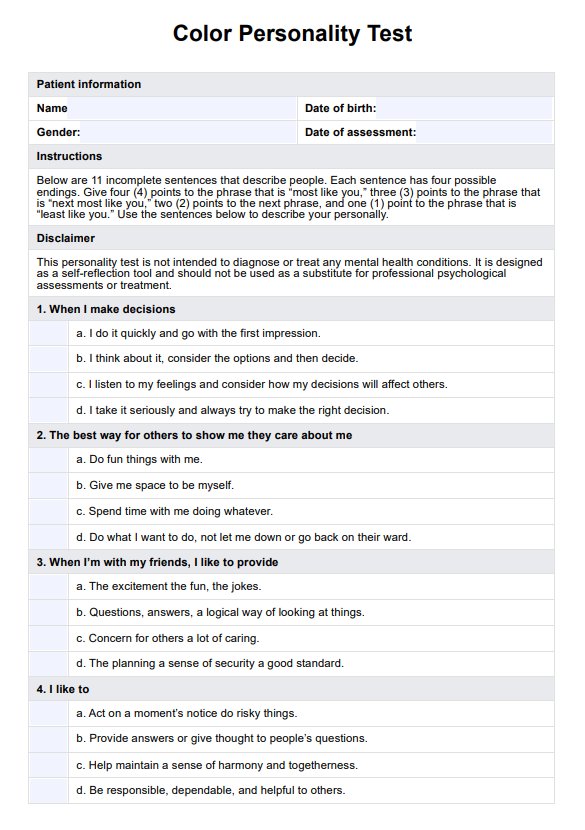Each color in the test represents different personality traits. For example, Blue might indicate empathy and emotional depth, while Orange could represent spontaneity and enthusiasm.

Color Personality Test
Use the Color Personality Test to assess patients' personality traits, improve communication, and guide personal development in healthcare settings.
Use Template
Color Personality Test Template
Commonly asked questions
While core personality traits tend to be stable, people's preferences and behaviors can evolve, potentially leading to different results.
Yes, the test can be adapted for children, offering a fun and engaging way to learn about themselves.
EHR and practice management software
Get started for free
*No credit card required
Free
$0/usd
Unlimited clients
Telehealth
1GB of storage
Client portal text
Automated billing and online payments











